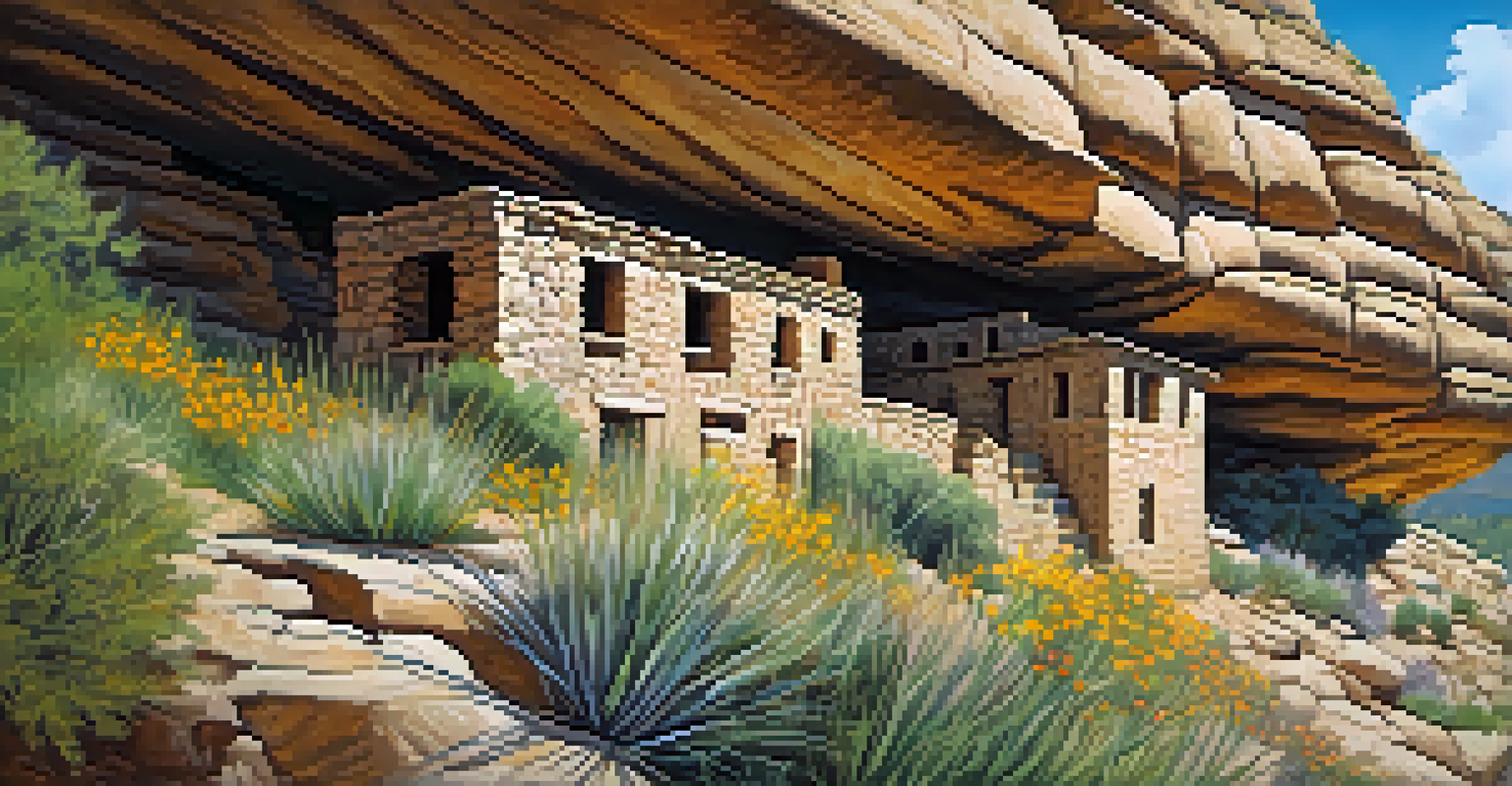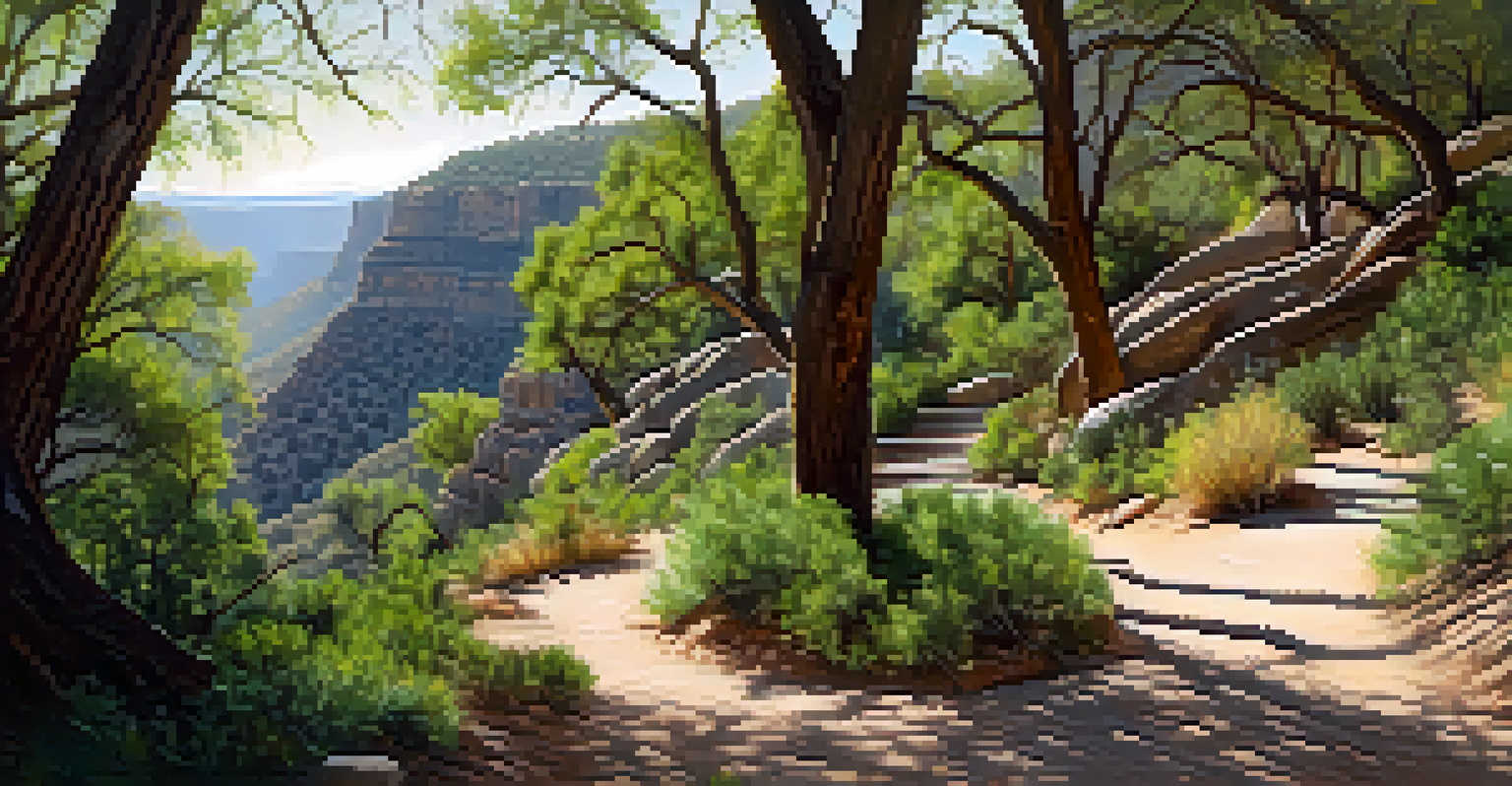Walnut Canyon National Monument: Ancient Cliff Dwellings

Introduction to Walnut Canyon National Monument
Nestled in the heart of Northern Arizona, Walnut Canyon National Monument is a stunning testament to the ingenuity of ancient peoples. This remarkable site showcases the cliff dwellings built by the Sinagua culture over 800 years ago. With its breathtaking scenery and rich history, Walnut Canyon invites visitors to explore the remnants of a fascinating past.
The beauty of the world lies in the diversity of its people.
As you wander through the canyon, you'll encounter a landscape filled with towering ponderosa pines and a variety of wildlife. The expansive views and unique geological features make it a perfect spot for both history buffs and nature enthusiasts alike. It's not just a park; it's a journey back in time.
Whether you're hiking the trails or simply soaking in the scenery, Walnut Canyon offers a glimpse into the lives of those who once called this place home. History and nature come together in a way that captivates the imagination and inspires a sense of wonder.
The Sinagua People and Their Cliff Dwellings
The Sinagua people, who inhabited the region from approximately 500 to 1250 AD, are renowned for their remarkable cliff dwellings. These structures, built into the canyon walls, provided protection from the elements and predators, showcasing the resourcefulness of the Sinagua. Their ability to adapt to their environment is a testament to their survival skills.

The dwellings were constructed from natural materials, including stone and adobe, and were often multi-storied, offering a glimpse into their daily lives. Archaeological evidence suggests that these communities engaged in agriculture, hunting, and trade, highlighting their connection to the land and each other. Walking through the ruins, you can almost hear the echoes of their laughter and daily activities.
Explore Ancient Sinagua Cliff Dwellings
Walnut Canyon National Monument offers visitors a chance to discover the remarkable cliff dwellings of the Sinagua people, showcasing their ingenuity and connection to the land.
Today, visitors can explore several of these ancient sites along well-maintained trails. The Island Trail, in particular, offers an up-close look at the impressive architecture and stunning views of the canyon, making it a must-see for anyone visiting Walnut Canyon.
Exploring the Island Trail
The Island Trail is a highlight of Walnut Canyon, offering an immersive experience among the ancient cliff dwellings. This 1-mile loop trail descends into the canyon and brings you right up to the remnants of the Sinagua homes. With over 300 steps, it’s a bit of a workout, but the views make every step worth it.
Nature is not a place to visit. It is home.
As you navigate the trail, interpretive signs provide fascinating insights into the history and culture of the Sinagua people. You'll learn about their agricultural practices, social structures, and why they chose to live in such a unique location. The combination of physical activity and learning creates a rewarding experience for visitors of all ages.
Be sure to take your time and soak in the serene atmosphere of the canyon. The sound of rustling leaves and the sight of birds soaring above create a peaceful backdrop, allowing you to connect with the history that surrounds you.
Wildlife and Flora of Walnut Canyon
Walnut Canyon is not only rich in history but also in biodiversity. The varying elevations and climates within the canyon create a unique habitat for numerous plant and animal species. From towering trees to colorful wildflowers, the flora here is a sight to behold, especially in the spring when everything is in bloom.
In addition to the plant life, wildlife enthusiasts will be delighted to spot various animals that call the canyon home. Keep an eye out for mule deer, coyotes, and an array of bird species, including the charming Western Bluebird. The diverse ecosystem adds another layer of appreciation for this natural wonder.
Wildlife and Flora Diversity
The diverse ecosystem within Walnut Canyon is home to various plant and animal species, providing a vibrant backdrop for exploration and appreciation of nature.
Exploring Walnut Canyon gives you the chance to observe these creatures in their natural habitat. Remember to bring your binoculars and a camera to capture the beauty of both the wildlife and the stunning landscapes.
Visitor Information and Tips
Planning a trip to Walnut Canyon National Monument is straightforward, but a few tips can enhance your visit. The monument is open year-round, with visitor center hours varying by season. Be sure to check the official website for current hours and any potential closures or special events.
When you arrive, take some time to stop by the visitor center, where you can find helpful maps, educational exhibits, and friendly staff ready to assist you. They can provide insights on the best trails and any ranger-led programs that might be taking place during your visit.
Lastly, don’t forget to wear comfortable shoes, bring plenty of water, and apply sunscreen, especially during the warmer months. Prepare for a day filled with exploration and discovery, and you’ll leave Walnut Canyon with memories that last a lifetime.
Cultural Significance of Walnut Canyon
Walnut Canyon holds deep cultural significance, not just for the Sinagua, but for many Indigenous peoples today. The stories and traditions passed down through generations highlight the importance of this land and its resources. Understanding this connection adds a profound layer to your visit.
Many Native American tribes regard the canyon as a sacred site, emphasizing the need for preservation and respect. Conversations around cultural heritage and land stewardship are essential when exploring such historic places. Engaging with these narratives enriches your experience and fosters a deeper appreciation for the site.
Cultural and Conservation Significance
Understanding the cultural heritage of Walnut Canyon and participating in conservation efforts enriches the visitor experience and fosters stewardship of this historic site.
As you explore, take a moment to reflect on the history that unfolds before you and the continuing legacy of the Indigenous peoples. It’s a reminder of the rich tapestry of human experience that has shaped this remarkable landscape.
Conservation and Preservation Efforts
Conservation efforts at Walnut Canyon National Monument are vital to preserving its unique cultural and natural resources. Park rangers and organizations work tirelessly to protect the archaeological sites and maintain the integrity of the environment. Their efforts ensure that future generations can also experience this incredible place.
Visitors can play a role in conservation by following park guidelines and being mindful of their impact on the landscape. Simple actions like staying on designated trails, packing out what you pack in, and respecting wildlife all contribute to the monument's preservation. Every small effort counts!

Additionally, educational programs and volunteer opportunities allow visitors to engage more deeply with conservation initiatives. Getting involved not only enriches your experience but also helps foster a sense of community and stewardship for the natural world.